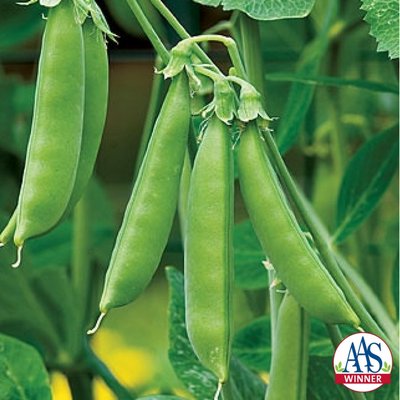

Growing peas in the backyard garden is easy, and they are one of the first choice crops of the season that are virtually insect- and disease free.
A cool-season crop, peas should be planted between mid-March and May 1. By using fast-maturing varieties it’s possible to have peas on the table in early May, and they can last until mid-summer.
Many gardeners resist growing peas because harvests can be scant, even on sturdy plants. You used to need to devote a fairly large area of the garden to assure abundance but now there are newer varieties with improved yields and smaller plants. There’s even a variety that you can now grow in a small 8-inch pot, and still others with edible pods.
One of the pea family’s most valuable attributes is its ability to manufacture nitrogen and release it into the soil. That means that these legumes can thrive in less fertile soil, which is an especially attractive trait for East Enders.
In fact, there are wild peas that grow out on the sand dunes. They are appropriately called “beach peas.”
Three kinds of garden peas can be sown as soon as the ground thaws for a late spring to early summer crop. Snap peas, or sugar snaps, not only have edible pods but also produce sweet peas; English, or garden peas, are traditional and eaten for the seed, not the pod; and snow, or Oriental peas, are prized for the paper-thin pods themselves, which are harvested when tender.
Peas, being cool-weather crops, come up quickly even when the soil is too cold for other crops and they thrive best before the summer heats up. In fact, heat slows pod production.
There may be plenty of blooms on the plants, but when it gets too hot they will drop off before pods “set.” This generally means that by early July, pea vines will pretty much stop producing altogether. Once that happens, you can plan to use the same garden space for a second crop, such as cabbage, Brussels sprouts, spinach or other late-season greens.
Today’s best peas—those that produce heavily but are sweet and tender—boast double pods on each stem end. This means more peas on each vine and excellent flavor. Look for plants described as “high yielding.”
If space is an issue, try Burpee’s Peas-in-a-Pot. These plants mature in only 55 days and are only 10 inches tall, though they still produce 3-inch pods and can be grown in 8-inch pots. They’re also said to be hardy to 20 degrees so you can plant them again in September and October.
The timing of the pea plantings can be critical. Seed planted too early may sit and rot so many gardeners do successional plantings.
Successional plantings accomplish two things. With weekly plantings, if the first crop fails to germinate then the second one probably will. A succession of plantings also assures that not all of the plantings will mature at the same time, resulting in a longer harvest.
Varieties that take a while to mature, are known as “main season” peas and should go in earlier since they timed to mature in June before the heat and humidity becomes oppressive. These varieties include: the original and still hugely popular sugar snap, which matures in nine weeks; Multistar, Green Arrow, Wando and Lincoln—four garden pea varieties—that mature in eight to nine weeks; and Mammoth Melting Sugar, a snow pea that matures in the same time frame.
Faster producing varieties can go in later. These include the snap pea Sugar Ann, garden peas Daybreak and Alaska, and the snow pea Dwarf Gray Sugar.
For the novice, the issue of when to plant different pea varieties can be quite confusing as varieties are often described as “early” or “late.” This almost always refers to when the pea matures, not when it should be planted. Thus the “late” variety should go into the ground in early spring, while an “early” type can go in up to May first and still be expected to produce a good crop.
As you make decisions on what pea varieties and quantities to get, keep in mind that you will probably want to sow another batch in July for a fall harvest. This second crop can be a bit tricky and won’t result in good yields every year, but occasionally you’ll get an early fall harvest that’s always a great bonus if you’ve got the space and the energy.
Pea plants, even the dwarf varieties, need something to lean on. Without support or something to cling to, the yield will be next to nothing.
The old-fashioned method was to let them grow on twigs stuck in the ground. Today gardeners provide a fence or hinged frame strung with netting or netting strung against a sun-facing wall.
Remember that the vines will follow the sun. If your rows are running east/west, don’t put your supports behind them as the plants will be growing toward the sun, which will be more southerly.
Pea fences are simple contraptions made of nylon netting and strung between two tall stakes or lightweight fence posts. When you are finished, just roll it up and put it away for next year. Don’t, however, underestimate the strength of the posts needed as a dense row of pea plants can catch plenty of wind and it’s tough trying to get the vines back up again after a blow.
Also, if you give your plants a rich soil you can expect them to surpass their predicted heights. Sugar Snaps grow to 7 feet tall if given the chance.
So, go out and get your soil ready. Add plenty of compost and invest in a packet of legume inoculant, a powdered bacterium that stimulates pea roots to produce a mother-lode of nitrogen beneath the soil as they grow. Those who inoculated last year that are planting in the same area this year can probably skip this step.
When getting ready to sow the seeds, run them under cool water in a sieve and sprinkle the inoculant on them. Sow within 24 hours because the moisture will stimulate them to grow rather quickly.
Broadcast seeds about every inch or two in a wide row, perhaps 2- to 3-feet across, or in separate rows 6- to 12-inches apart. If you choose a layout with narrow rows, be sure you have erected your netting along each row, which is actually a very efficient way of growing peas because you’ll be able to pick each row easily.
As vines mature and peas appear on them, the foliage will begin to dry up from the bottom toward the top. This is normal and no cause for concern.
Ultimately, the whole vine will dry up, losing much of its green color. When this happens, you’ll know it’s time to pull the crop out. Be sure to add the vines and any attached roots to the compost pile, as the pea plant is high in nutrients and its decomposition will enrich your garden for the following seasons.
Happy planting and keep growing.
 More Posts from Andrew Messinger
More Posts from Andrew Messinger